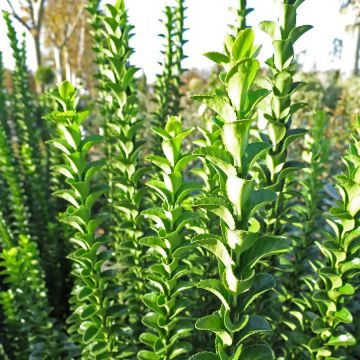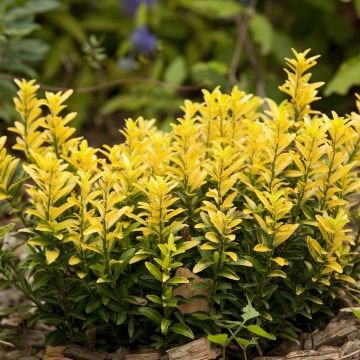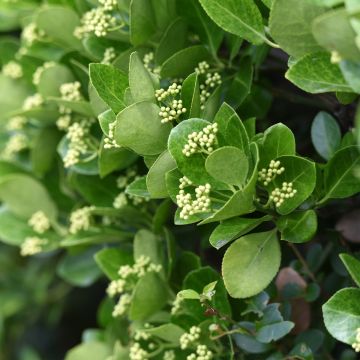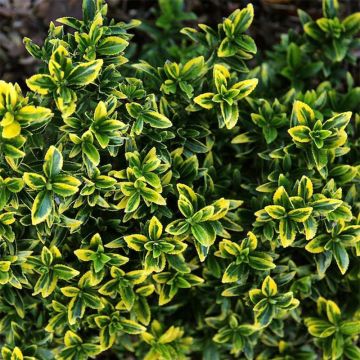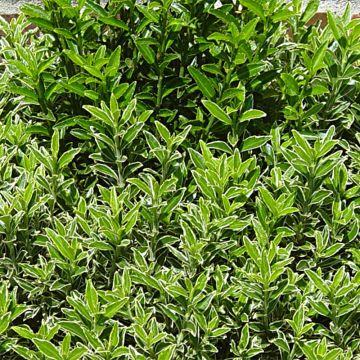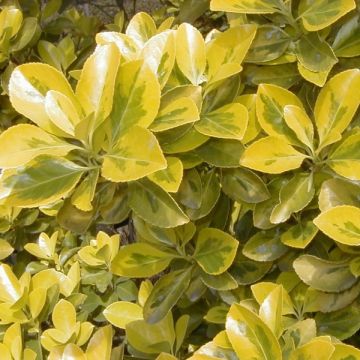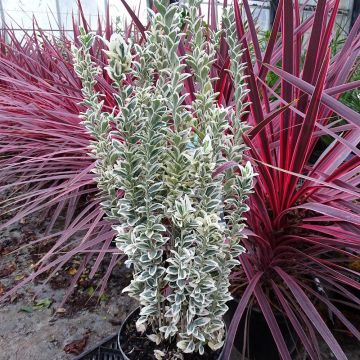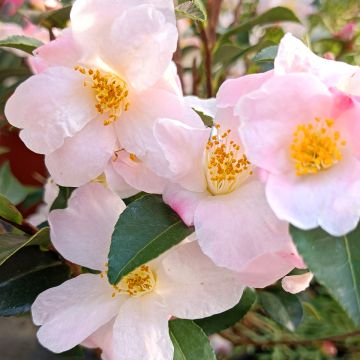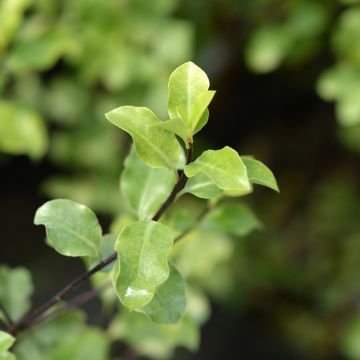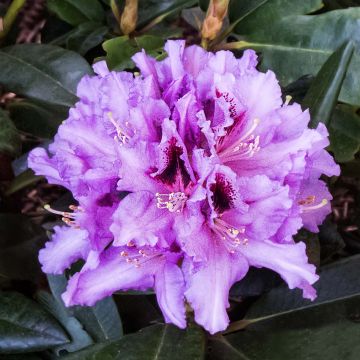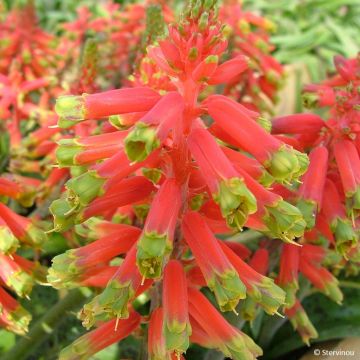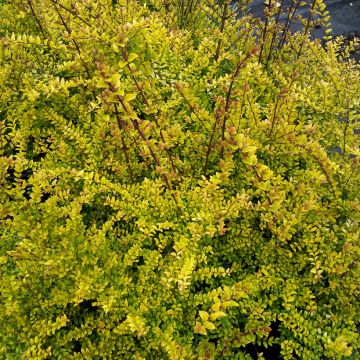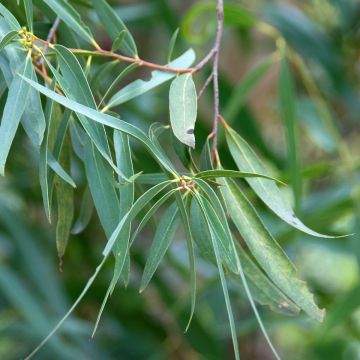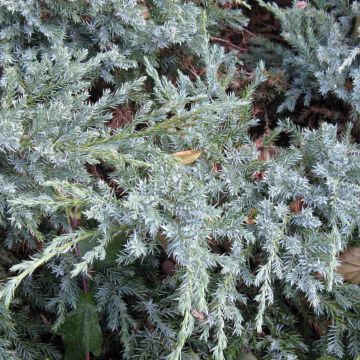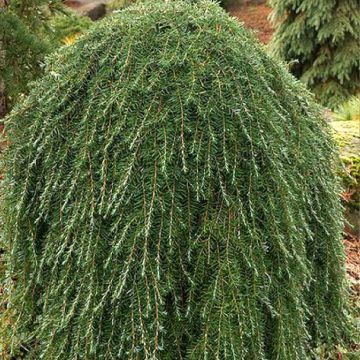Shipping country and language
Your country of residence may be:
Your country of residence is:
For a better user experience on our website, you can select:
Your shipping country:
-
Andorra
-
Austria
-
Belgium
-
Bulgaria
-
Canada
-
Chile
-
Croatia
-
Cyprus
-
Czechia
-
Denmark
-
Estonia
-
Finland
-
France
-
Germany
-
Greece
-
Hungary
-
Iceland
-
Ireland
-
Italy
-
Latvia
-
Lithuania
-
Luxembourg
-
Malta
-
Monaco
-
Netherlands
-
Poland
-
Portugal
-
Romania
-
Slovakia
-
Slovenia
-
Spain
-
Sweden
-
Switzerland
-
United Kingdom
We only deliver seed and bulb products to your country. If you add other products to your basket, they cannot be shipped.
Language:
-
French
-
German
-
Spanish
-
English
-
Italian
My Account
Hello
My wish lists
Log in / Register
Existing customer?
New customer?
Create an account to track your orders, access our customer service and, if you wish, make the most of our upcoming offers.
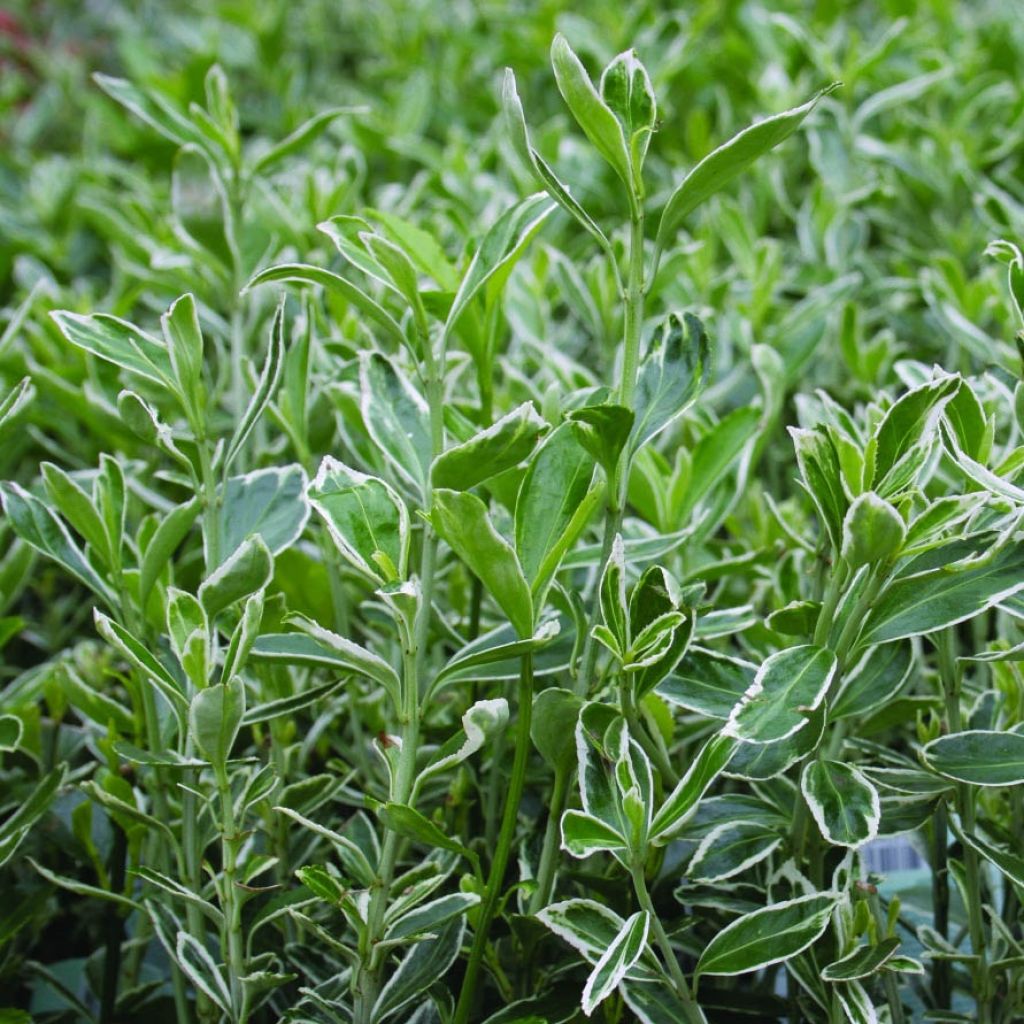

Euonymus japonicus Suzanne - Japanese Spindle
Euonymus japonicus Suzanne - Japanese Spindle
Euonymus japonicus Suzanne
Japanese Spindle, Evergreen Spindle
Field of plants arrived in good condition, approximately 30 centimetres (12 inches) in height, vigorous.
Annie, 01/11/2022
Order in the next for dispatch today!
Dispatch by letter from €3.90.
Delivery charge from €5.90 Oversize package delivery charge from €6.90.
More information
This item is not available in your country.
Schedule delivery date,
and select date in basket
This plant carries a 24 months recovery warranty
More information
We guarantee the quality of our plants for a full growing cycle, and will replace at our expense any plant that fails to recover under normal climatic and planting conditions.
From €5.90 for pickup delivery and €6.90 for home delivery
Express home delivery from €8.90.
From €5.90 for pickup delivery and €6.90 for home delivery
Express home delivery from €8.90.

Does this plant fit my garden?
Set up your Plantfit profile →
Description
The Euonymus japonicus 'Suzanne' is a variety of Japanese Spindle of small size, forming a compact bush, notable for its small dark green leaves, finely marginated with cream white. Evergreen, this adorable little shrub is a full-fledged decorative element: it brightens up the rockery, forms an original and refined border, or decorates the terrace even in the middle of winter. It will thrive in light shade, ordinary soil, even limestone, but remaining moist.
The Japanese Spindle belongs to the family of Celastraceae. It is native, as its name suggests, to Japan. But it is also found in China and Korea. In the wild, this large shrub grows on slopes, in open areas on the edge of the forest, up to the seashore where it can become a tree of 8 m (26 ft) in height. Its hardiness is around -12°C (10.4°F), and its growth is quite slow.
The cultivar 'Suzanne', sometimes known as 'Susan', has slow growth, and shows reduced development that will rarely exceed 80 cm (31.5 in) in all directions, especially if pruned every spring. Its natural habit is very dense and bushy, distinctly rounded. Well-branched from the base, its upright branches bear dense foliage, composed of glossy, tough and rigid leaves, dark green with cream white margins. They are lanceolate to ovate in shape, irregular, with dentate edges, and slightly undulate.
The Euonymus japonicus 'Suzanne' is valuable for establishing the permanent structure of low beds and particularly contributes to the decoration of the terrace. Its variegated foliage enhances all flowerings and works wonders in semi-shaded areas of the garden. Well-adapted to the seaside and urban gardens, the Japanese Spindle 'Suzanne' can be used to create miniature hedges along paths or terraces. It can be planted alone or accompanied by robust ground covers such as Teucrium chamaedrys, adorned with a few Erigeron karvinskianus plants and Acanthus Whitewater, with beautifully variegated foliage and soft pink flower spikes.
Report an error about the product description
Euonymus japonicus Suzanne - Japanese Spindle in pictures
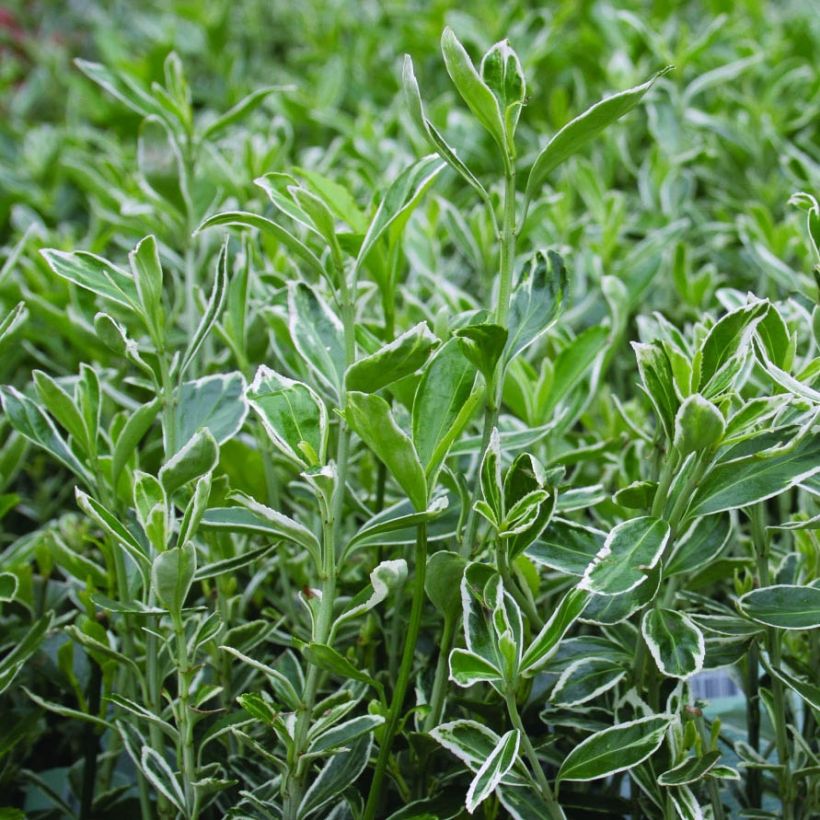

Plant habit
Flowering
Foliage
Botanical data
Euonymus
japonicus
Suzanne
Celastraceae
Japanese Spindle, Evergreen Spindle
Cultivar or hybrid
Other Japanese Spindle Trees - Euonymus japonicus
Planting and care
The Euonymus japonicus 'Suzanne' prefers to be planted in spring in well-drained soil in a slightly sunny or lightly shaded position. It prefers deep soils, rich in humus, that stay moist, and tolerates the presence of limestone in the soil. It is sensitive to heavy frost and is hardy up to approximately -12/-14°C. The hot and dry climates in the south of our country are not suitable for this evergreen spindle, as it may become infested with mealybugs and sooty mold. Pruning is well tolerated between April and May. Caution: pruning too early in spring can be detrimental to young tender shoots, especially in case of late frost. Similarly, excessive pruning can lead to the development of sooty mold, especially in very dry soil. Apply fertilizer twice a year, in early spring and autumn. Water during drought to maintain a beautiful foliage. If the plant is cultivated in a pot, it is necessary to change the growing substrate once a year in spring. Protect your pot if heavy frost is forecast (<-5°C).
Planting period
Intended location
Care
-
, onOrder confirmed
Reply from on Promesse de fleurs
Evergreen shrubs
Haven't found what you were looking for?
Hardiness is the lowest winter temperature a plant can endure without suffering serious damage or even dying. However, hardiness is affected by location (a sheltered area, such as a patio), protection (winter cover) and soil type (hardiness is improved by well-drained soil).

Photo Sharing Terms & Conditions
In order to encourage gardeners to interact and share their experiences, Promesse de fleurs offers various media enabling content to be uploaded onto its Site - in particular via the ‘Photo sharing’ module.
The User agrees to refrain from:
- Posting any content that is illegal, prejudicial, insulting, racist, inciteful to hatred, revisionist, contrary to public decency, that infringes on privacy or on the privacy rights of third parties, in particular the publicity rights of persons and goods, intellectual property rights, or the right to privacy.
- Submitting content on behalf of a third party;
- Impersonate the identity of a third party and/or publish any personal information about a third party;
In general, the User undertakes to refrain from any unethical behaviour.
All Content (in particular text, comments, files, images, photos, videos, creative works, etc.), which may be subject to property or intellectual property rights, image or other private rights, shall remain the property of the User, subject to the limited rights granted by the terms of the licence granted by Promesse de fleurs as stated below. Users are at liberty to publish or not to publish such Content on the Site, notably via the ‘Photo Sharing’ facility, and accept that this Content shall be made public and freely accessible, notably on the Internet.
Users further acknowledge, undertake to have ,and guarantee that they hold all necessary rights and permissions to publish such material on the Site, in particular with regard to the legislation in force pertaining to any privacy, property, intellectual property, image, or contractual rights, or rights of any other nature. By publishing such Content on the Site, Users acknowledge accepting full liability as publishers of the Content within the meaning of the law, and grant Promesse de fleurs, free of charge, an inclusive, worldwide licence for the said Content for the entire duration of its publication, including all reproduction, representation, up/downloading, displaying, performing, transmission, and storage rights.
Users also grant permission for their name to be linked to the Content and accept that this link may not always be made available.
By engaging in posting material, Users consent to their Content becoming automatically accessible on the Internet, in particular on other sites and/or blogs and/or web pages of the Promesse de fleurs site, including in particular social pages and the Promesse de fleurs catalogue.
Users may secure the removal of entrusted content free of charge by issuing a simple request via our contact form.
The flowering period indicated on our website applies to countries and regions located in USDA zone 8 (France, the United Kingdom, Ireland, the Netherlands, etc.)
It will vary according to where you live:
- In zones 9 to 10 (Italy, Spain, Greece, etc.), flowering will occur about 2 to 4 weeks earlier.
- In zones 6 to 7 (Germany, Poland, Slovenia, and lower mountainous regions), flowering will be delayed by 2 to 3 weeks.
- In zone 5 (Central Europe, Scandinavia), blooming will be delayed by 3 to 5 weeks.
In temperate climates, pruning of spring-flowering shrubs (forsythia, spireas, etc.) should be done just after flowering.
Pruning of summer-flowering shrubs (Indian Lilac, Perovskia, etc.) can be done in winter or spring.
In cold regions as well as with frost-sensitive plants, avoid pruning too early when severe frosts may still occur.
The planting period indicated on our website applies to countries and regions located in USDA zone 8 (France, United Kingdom, Ireland, Netherlands).
It will vary according to where you live:
- In Mediterranean zones (Marseille, Madrid, Milan, etc.), autumn and winter are the best planting periods.
- In continental zones (Strasbourg, Munich, Vienna, etc.), delay planting by 2 to 3 weeks in spring and bring it forward by 2 to 4 weeks in autumn.
- In mountainous regions (the Alps, Pyrenees, Carpathians, etc.), it is best to plant in late spring (May-June) or late summer (August-September).
The harvesting period indicated on our website applies to countries and regions in USDA zone 8 (France, England, Ireland, the Netherlands).
In colder areas (Scandinavia, Poland, Austria...) fruit and vegetable harvests are likely to be delayed by 3-4 weeks.
In warmer areas (Italy, Spain, Greece, etc.), harvesting will probably take place earlier, depending on weather conditions.
The sowing periods indicated on our website apply to countries and regions within USDA Zone 8 (France, UK, Ireland, Netherlands).
In colder areas (Scandinavia, Poland, Austria...), delay any outdoor sowing by 3-4 weeks, or sow under glass.
In warmer climes (Italy, Spain, Greece, etc.), bring outdoor sowing forward by a few weeks.


